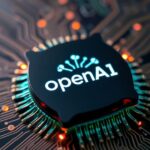
Dig Energy’s Small Drill Rig: Geothermal’s Cost Solution?
Geothermal Energy Gets a Boost: Dig Energy’s Innovative Drill Rig Geothermal energy, a sustainable and reliable power source, often faces a significant hurdle: high costs....


Geothermal Energy Gets a Boost: Dig Energy’s Innovative Drill Rig Geothermal energy, a sustainable and reliable power source, often faces a significant hurdle: high costs....

Plex Urges Password Changes After Data Breach Plex the popular media server platform recently experienced a data breach. As a result they’re urging all users...

Nuclearn Gets $10.5M to Help the Nuclear Industry Embrace AI Nuclearn recently secured $10.5 million in funding to accelerate the adoption of Artificial Intelligence (AI)...

Minute Media Enhances Sports Content with AI Acquisition Minute Media, backed by BlackRock, has broadened its tech capabilities through the acquisition of an Indian AI...

Google AI Adds More Languages Google is expanding its AI capabilities by incorporating five new languages, including Hindi, Japanese, and Korean. This update aims to...

Cognition AI Raises $400M Amid AI Boom Cognition AI has recently demonstrated its strength in the artificial intelligence sector by successfully raising $400 million. This...

Are Bots Making Social Media Feel Fake? Sam Altman Thinks So Sam Altman, CEO of OpenAI, recently shared his perspective on a growing concern: the...